FREITAL, Germany — It was 12:45 on a quiet summer night in 2015 when local councilman Michael Richter was jolted from his sleep by a huge bang.
“At first, I thought it was teenagers setting off fireworks in the backyard,” he recalled. Rushing to his kitchen window, he saw a huge plume of black smoke rising from his Volkswagen Polo parked outside. The car was destroyed and others nearby were damaged. Richter picked up the phone and called the police.
He didn’t know it yet, but the bombing was the first attack of a small group of local thugs and Nazi sympathizers known as the Freital Group. According to prosecutors, what started out as a loose association of far-right activists, football hooligans, and hate-filled anti-migrant Facebook groups soon spawned a terror organization. Its goal was clear: to drive out the few hundred refugees who’d recently settled in town, many of them fleeing conflict in Syria and Afghanistan, at any cost.
Freital is a sleepy former mining town with a provincial, conservative outlook, though Richter, was committed to making it less so. As a local councilman for The Left party since 2009, he’d been a vocal supporter of asylum seekers, organizing events and demonstrations in solidarity with their cause. It was an unpopular stance in Freital, where the refugees’ arrival had sparked volatile protests; angry crowds of more than 1,000 people would gather outside the refugees’ home, hurling insults and yelling for the newcomers to get out of town.
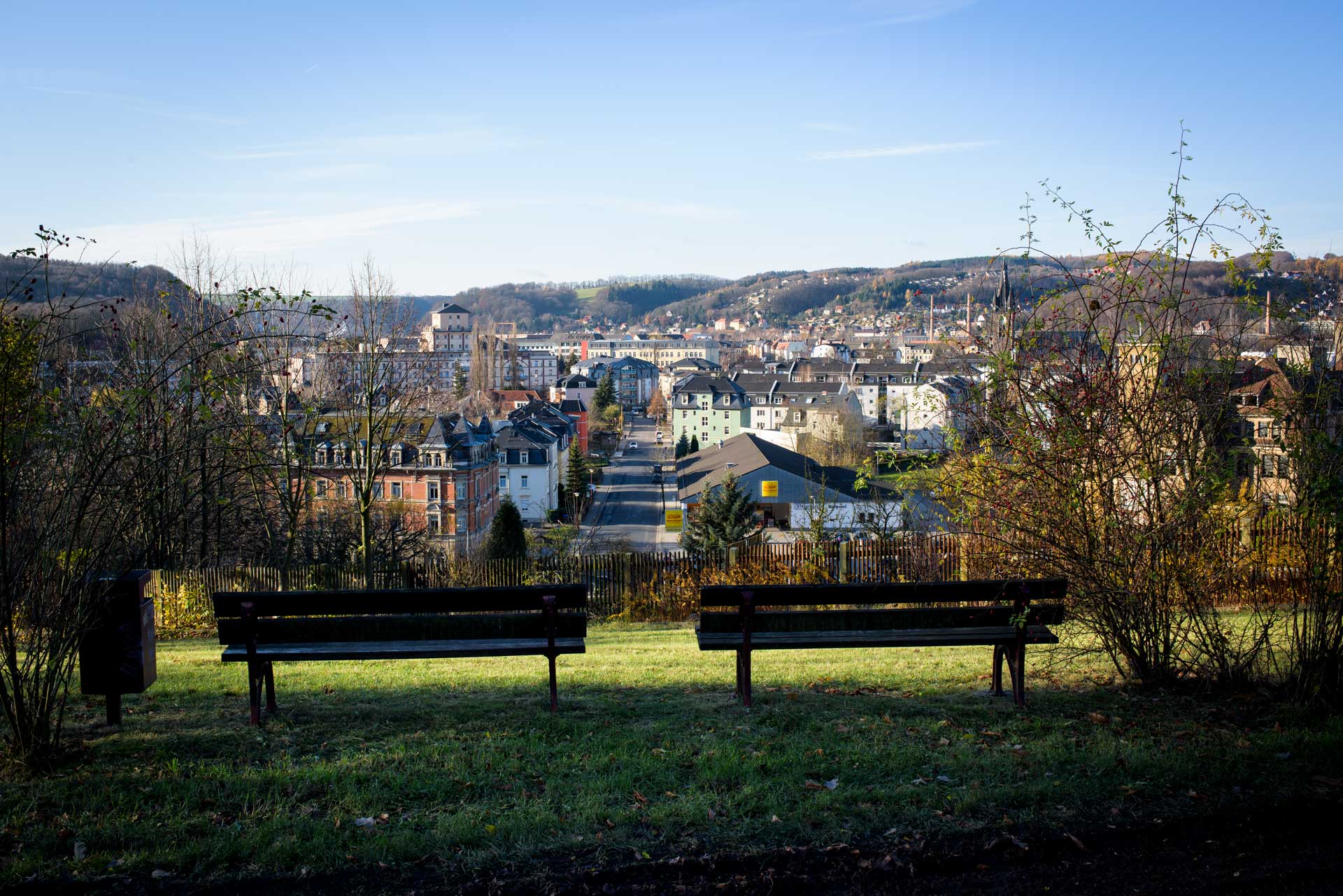
So when the bomb went off, “I realized pretty quickly that it was an attack from right-wingers,” Richter, 41, told me last fall.
But he didn’t know exactly who they were, and neither, apparently, did local law enforcement. Members of the Freital Group wouldn’t be arrested until November 2015; before that, they would carry out four more attacks of increasing intensity, targeting not only the refugees living in the town but also the left-wing activists who stuck up for them. According to prosecutors, they detonated powerful homemade bombs at the homes of asylum seekers, at the Left’s party offices, and at a left-wing cooperative housing project.
“They accepted that people could die.”
The group injured only two people, a Syrian refugee and a resident of the housing project, but prosecutors say the damage was intended to be far worse. “They wanted to create a climate of fear and repression,” federal prosecutor Joern Hauschild told the court last year. “In at least one case, they accepted that people could die.”
On Wednesday, a judge will deliver a verdict on charges against eight of the alleged terrorists — seven men and a woman, ages 20 to 40 — who have been on trial in nearby Dresden since last March. The charges include forming a terrorist group, attempted murder, and grievous bodily harm, and the defendants could receive up to life sentences. Their attorneys aren't denying their clients' actions, only their categorization as terrorism.
The case is one of only a handful of federal trials of homegrown terrorists in modern German history. The group was part of a new wave of right-wing extremism in which offenders are increasingly willing to use violence against both foreigners and the politicians they blame for their presence.
Across Europe, populist anti-Islam and anti-immigration movements are helping to radicalize these extremists. To take two more recent examples, a Britain First supporter drove his car into worshipers outside a London mosque last year, and an Italian gunman, a former candidate for the Northern League, shot six African immigrants during a rampage last month.
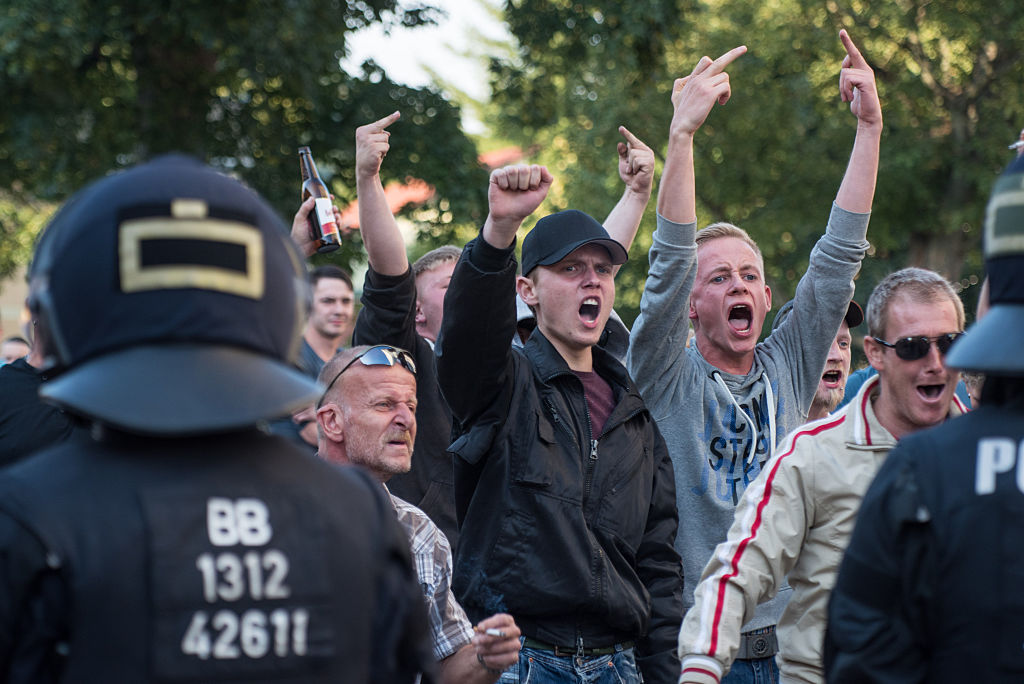
The protests that roiled Germany during the 2015 migrant crisis drew widespread public support, swelling the ranks of far-right activists and triggering a spate of xenophobic attacks. In some areas, they unleashed something darker. Saxony, the East German state where Freital is situated, has long been a stronghold of far-right ideologies and structures, home to both skinheads and extremist politicians. (Despite club efforts to ban them, the Dresden Dynamo football team can’t shake the support of violent neo-Nazi hooligans known as the “Fist of the East.”) In Freital, the protests drew the members of the alleged terror group together and inspired them to carry out their bombings — far-right researchers who have followed the case say that the flourishing climate of hate speech emboldened them to feel they could act with impunity.
Germany’s Federal Prosecutor’s Office took over the investigation into the Freital attacks from Saxony’s state prosecutors in April 2016, determining that the group should be treated as a terrorist organization, a reflection of how seriously authorities are taking the threat.
Yet in Freital today, more than two years on from the violence that brought a rash of unwelcome attention to the town, there’s more sympathy on display for the attackers than for their victims. Swastikas still pop up in graffiti on buildings, and Richter has been the target of ongoing threats on the street and online. In September, the staunchly anti-Islam, anti-migration Alternative for Germany party, or AfD, won a staggering 36 percent of the vote in Freital’s electoral district, 10 points more than any other party.
Anti-racist groups say their offers to do educational outreach about the Freital Group’s trial in local schools and community groups — a way, as they see it, to try to make something positive out of the case — have had no takers. No one in Freital, it seems, is much interested in learning any lessons.
As I discovered on a visit to the town last fall, there’s a prevailing sentiment among residents that the terror charges amount to prosecutorial overreach — a heavy-handed response by the federal government toward a group viewed locally more as mischief-makers than violent extremists.
“Everyone in Freital thinks it’s an overreaction,” Dirk Jährling, the local chair of the AfD, told me. Locals may feel that the group crossed a line by resorting to violence, he said, but most people in Freital agree with their basic position: The migrants should never have come to town in the first place.

Freital is a quiet industrial burg of 40,000 people, located about a 20-minute drive from downtown Dresden, the Saxon state capital. Nestled among pleasant green hills of the coal-rich Döhlen Basin, it’s functionally a suburb, with none of the grandeur of its larger neighbor, where the city’s baroque Old Town architecture was painstakingly rebuilt after the Allied bombing raids of the Second World War.
Lacking any such center itself, Freital’s defining feature is the Dresdnerstrasse, a 3-mile main drag that winds through the middle of town and is where much of the action in the Freital Group’s story took place. It’s hard to imagine a car blowing up here; when I visited on a weekday afternoon in October, the street was quiet and largely deserted.
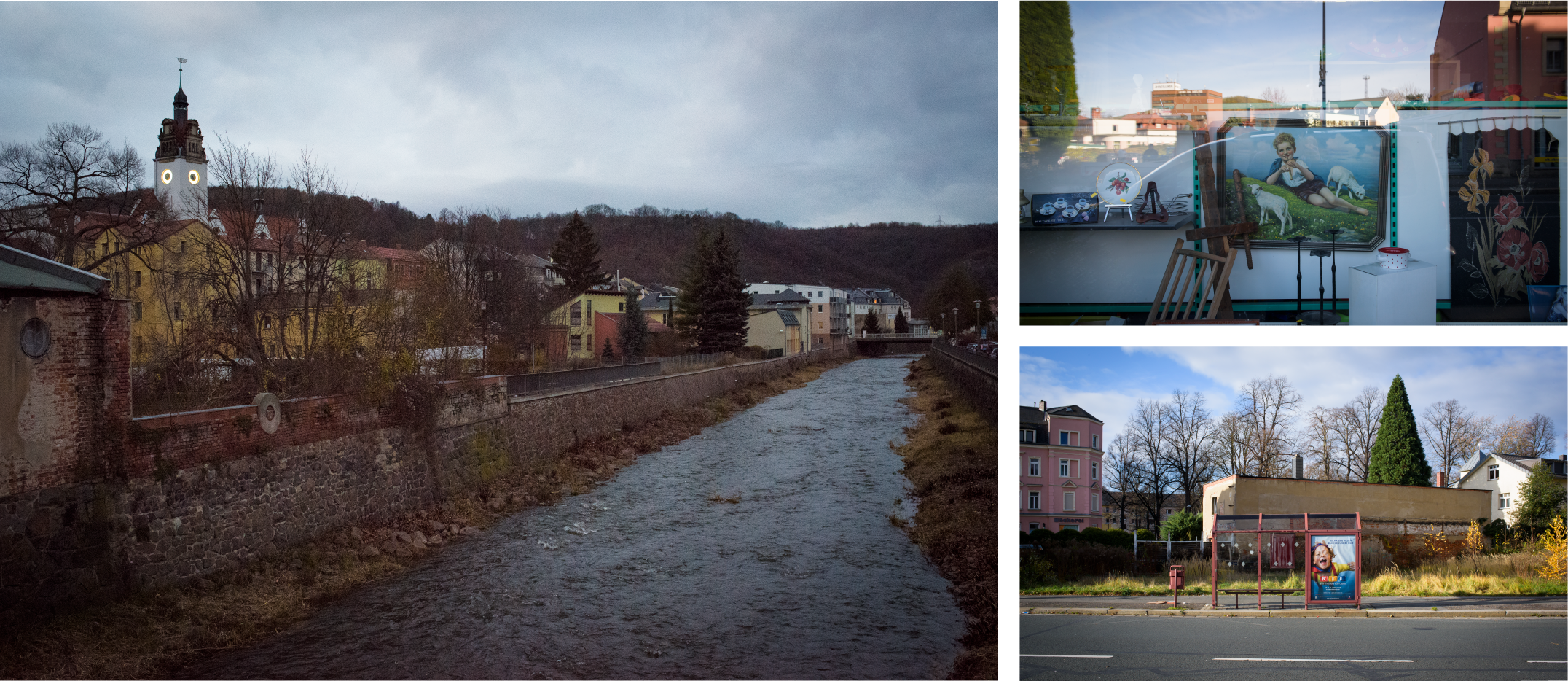
Things were different in the summer of 2015, when Europe’s mass migration crisis was reaching its peak. Hundreds of thousands of people, most of them young Muslim men, poured into the continent overland through southeast Europe or across the Mediterranean. Germany, the economic heart of Europe, was their preferred destination.
Faced with the historic influx of refugees, Chancellor Angela Merkel boldly declared, “Wir schaffen das (We’ll manage this)” and offered an open door to the newcomers that September. Germany took in nearly 900,000 migrants — the vast majority of them Muslim — before the year was out.
In a country burdened by the national guilt of the Holocaust, Merkel’s stance initially met with widespread domestic approval as a demonstration of moral and compassionate global leadership. But not everyone was in favor. Protests, and in some cases violence, erupted around the country, and Germany began to see its biggest surge in right-wing extremism since the Nazi era.
A 2015 report by the country’s domestic security agency found more violence-oriented right-wing extremists (11,800 of them) were committing more violent offenses (1,408 in 2015, up 42 percent from the previous year), including 75 arson attacks on migrant shelters (there were five in 2014). It also recorded a huge surge in far-right sympathizers and supporters; 95,000 people attended right-wing extremist demonstrations in 2015, up from 20,000 a year earlier. A report the following year showed the problem had only grown.
In Freital, a decision by the authorities in early 2015 to convert the Leonardo Hotel, a former three-star conference venue on a hill overlooking Dresdnerstrasse, into a reception center for asylum-seekers went over badly with many locals. There were fears that the migrants would bring with them Islamist extremism, crime, and a culture incompatible with German society; there were also suspicions that the new arrivals, by and large young men, were not genuine refugees but were just looking for an easier life subsidized by hardworking locals.
Inspired by weekly anti-migrant rallies in Dresden that were drawing crowds of up to 15,000 people, large, rowdy and occasionally violent protests against the migrants became a regular occurrence in Freital. Crowds of hundreds chanted “Filth out” and “This is no place to flee to” outside the refugees’ new home. There were threats to burn the hotel down, clashes with counter-demonstrators, stones thrown through windows. The few hundred refugees living there were afraid to go outside.
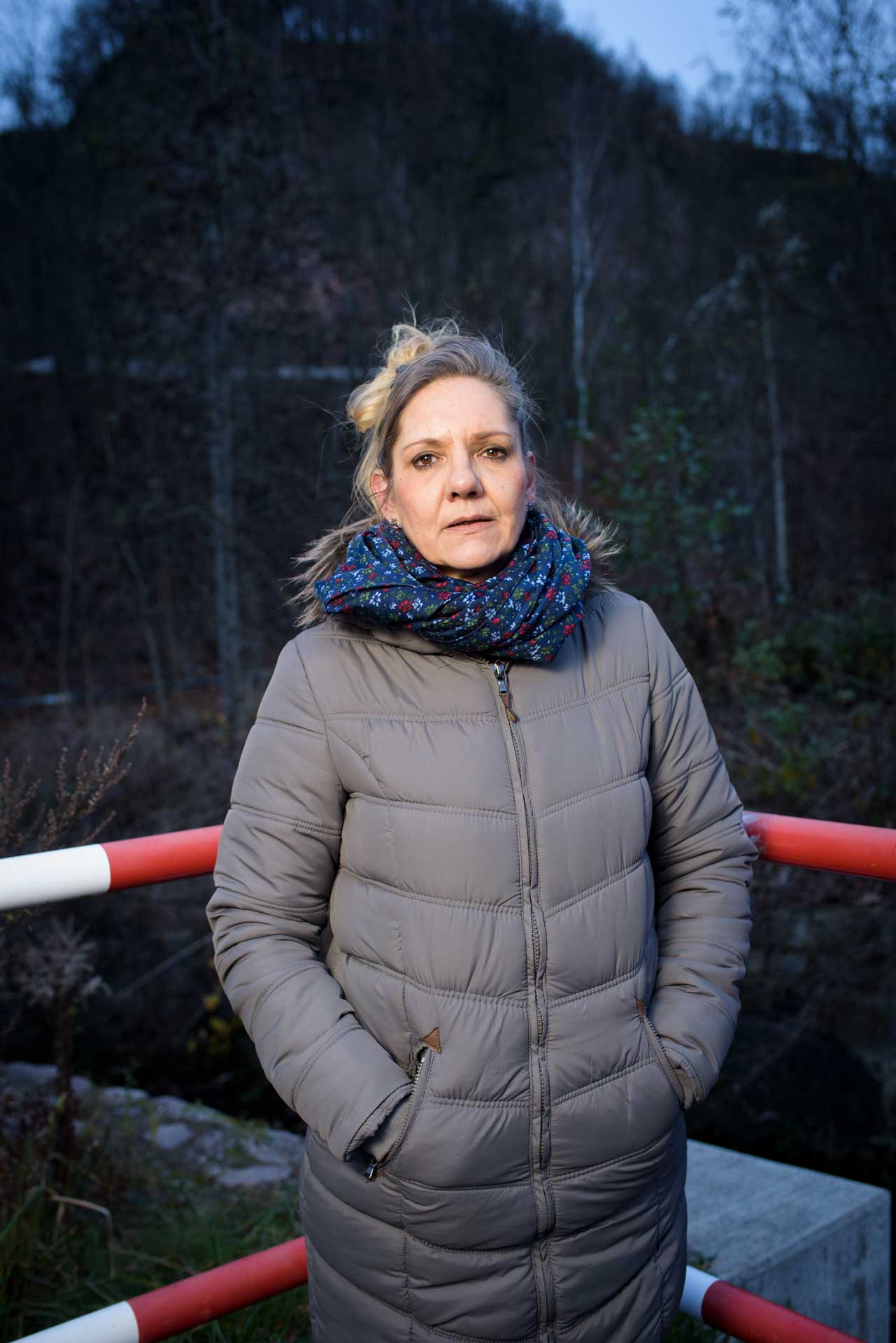
Ines Kummer, a local councillor for the left-wing Greens, has lived in Freital all her 54 years. She worked for one of the few pro-refugee organizations in town and for a while was the foster mother for a teenage refugee. She recalled being shocked to suddenly find herself the target of naked hostility in the town that summer. She says she received death threats online and over the phone as well as regular harassment on the street. (She agreed to meet me in a cafe in Dresden — it would be impossible to tell her story in a similar setting in Freital, she said.)
She always knew the town had a racist element, she told me, “but not to this degree.”
Her foster son, Romeo, was an orphan who had come to Germany from Ghana in 2014 at 16, before the migrant wave that followed. At the peak of the tensions in 2015, she urged him not to leave his house during the regular Friday demonstrations against refugees.
“When he was on the street, he would regularly be verbally attacked,” she recalled. The incidents often happened on public transport — strangers would use racial slurs and loudly let him know that they hated foreigners. On one occasion, neo-Nazis gate-crashed a garden party at the hostel where he lived with other African migrants. When Kummer was with him, she would also face abuse — one on occasion when they were walking together, a drunk group of hooligans threatened to beat Romeo up and made a throat-slitting gesture in their direction.

It didn’t take long for the opposition to the migrants in Freital to take a more sinister turn. A group of hotheads formed a vigilante “citizens’ defense” group after complaints surfaced that locals had been harassed by asylum seekers on a local bus line. Prosecutors believe this network, a sort of intimidating Saxon version of the Guardian Angels, contained the nucleus of the Freital Group.
With a self-appointed mission to monitor the behavior of the newcomers, the citizen patrol became a menacing presence on the streets and bus routes of Freital and at the fringes of the anti-migrant rallies. The group created a public Facebook group, which gained more than 2,400 followers, and printed T-shirts that said “Bürgerwehr FTL / 360,” a reference to the bus line on which the alleged harassment took place.
Secretly, however, a hard core among them began plotting an even more extreme response, to ramp up their campaign of intimidation with direct attacks on refugee and leftist targets.
Prosecutors believe the cell was led by Timo Schulz, a bus driver and neo-Nazi with links to the local hooligan scene, and Patrick Festing, a local pizza delivery guy. Schulz had credentials as a neofascist — he reportedly kept Nazi flags in his apartment, and had been sacked from a previous job for posting hate speech on Facebook. By contrast, Festing — although he had hung around the fringes of the local football hooligan scene — had no real profile as an extremist. According to reports, he was simply drawn to the anti-migrant sentiment that seethed in Freital that summer; he and Schulz met at a protest outside the Hotel Leonardo.
They regularly met with other anti-migrant activists in the forecourt of a local gas station to drink beer and blow off steam about the refugee issue. Their discussions swiftly escalated from racist rhetoric — “Kill all of them, these miserable parasites!" read a typical message in their private chat group — to actively seeking out explosives.
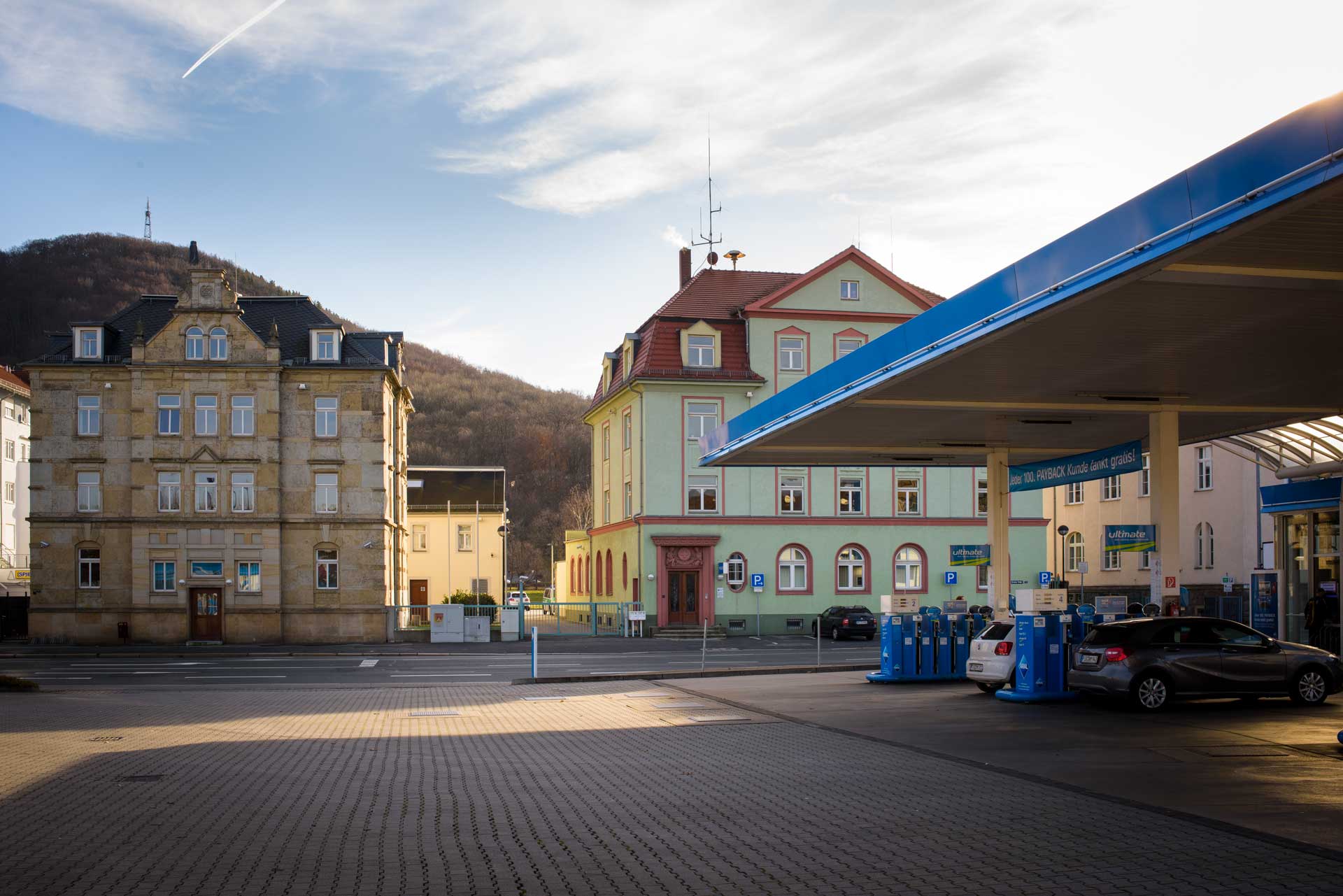
The group communicated using a number of chat channels on the KakaoTalk app, switching from an open channel for more generic conversations to an encrypted secret channel when plotting attacks. Messages on the latter often centered on the topic of “fruit,” a codeword for the high-powered, illegal fireworks the group obtained from the Czech Republic and Poland to make its bombs.
After their first attack on Richter’s empty vehicle in July, the group swiftly ramped up its efforts to try to hit human targets in occupied buildings, throwing the explosives or leaving the devices on window ledges.
“We heard the boom, you rogue.”
The group puffed themselves up by sharing pictures of the explosions, as well as group photographs they had posed for. In one, they wore hoods and gave Hitler salutes behind a swastika flag; in another they raised their fists and a burning torch. In these chats, later published in the German weekly Der Spiegel and elsewhere, they joked about the attacks, often seeming to enjoy the process.
“Just set off a firework at the intersection in front of a shelter. Nasty explosion,” wrote one of the accused, bus driver Philipp Wendlin.
“We heard the boom, you rogue,” replied another member of the group.
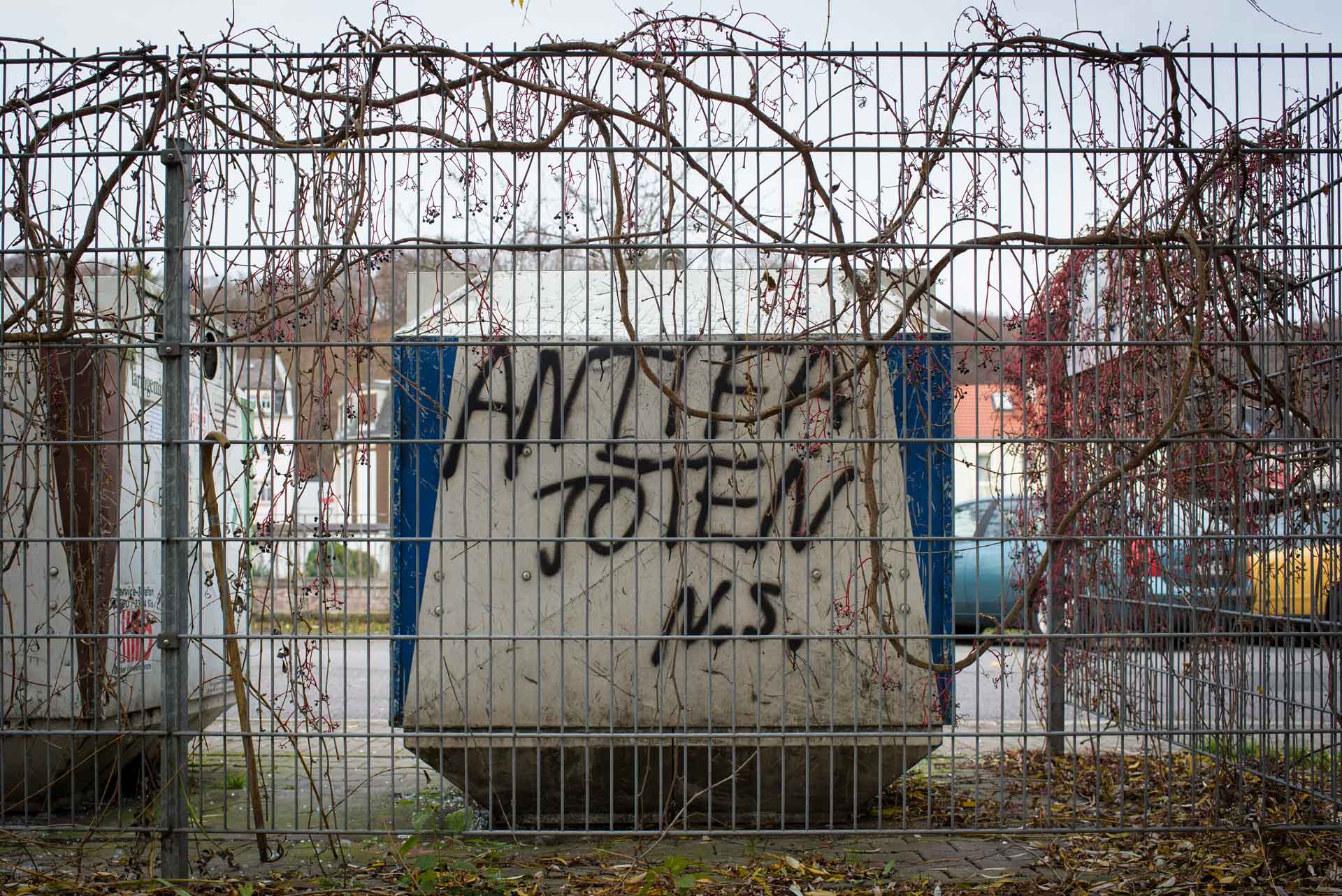
Prosecutors believe the bombing campaign would have eventually proved fatal. The group’s final attack, on the home of four Syrian refugees, created an immense explosion, sending thick splinters of glass through the air and leaving one of the victims with injuries to his eye and face; it would have been worse, but one of the men spotted the burning fuse on the windowsill and rushed his roommates out of the kitchen.
Days before the attack, Festing had enthusiastically reported his discovery of the new target to the group on their encrypted chat.
“I’ve found a new window,” he wrote, using a slur to describe the Syrians whose house would be bombed.
A member of the group replied: “Have fun, and remember we’re Nazis until the bitter end.”

The question of why in Freital, where less than 4 percent of the population is of non-German nationality, anger over the migrants shifted from protest to terrorism is one that has stumped observers. But they say it’s no great surprise that such a group emerged in Saxony, an eastern state flanked by Poland and the Czech Republic that has been the site of a number of other major far-right attacks or attempted attacks in recent years.
Polls show that Saxons have tended to be to the right of other Germans on social issues including immigration and the “Islamization” of Germany. A 2016 survey, for example, found that nearly 40 percent of respondents in the state thought Muslims should be banned from migrating to Germany, compared to about 16 percent nationally.
Another study published in May 2017 found that unlike their cousins in the west of the country, who’ve acculturated to many decades of immigration from non-European countries, Germans in the east had an “exaggerated need for harmony, ‘purity,’ and order” and an “ethnically pure identity.”
Michael Nattke, a far-right specialist at Kulturbüro Sachsen, an organization that works to counter right-wing extremism in Saxony, has closely followed the events in Freital. He says that one major influence in stirring up extremism there was PEGIDA (Patriotic Europeans Against the Islamization of the West), a populist, virulently anti-Islamic street movement that was launched in Dresden in 2014 and has since inspired copycat movements around the world.
Nattke said the mass demonstrations gave oxygen to racist opinions that had previously been taboo, validating them in the eyes of those who took part. “Before PEGIDA, we always knew there was a racist, xenophobic minority, but we would never see them openly expressing these views in protests in the streets,” he said.
“When there are thousands of people there all saying the refugees are criminals, you go home and think: ‘We’re the majority.’”
In Nattke’s eyes, there’s an undeniable link between these protests and the violence that followed. “For everybody, even far-right extremists, there’s a step that needs to be taken in order to carry out a violent act. And this step isn’t easy,” he said.
“But when you’re at a protest and there are thousands of people there, all saying the refugees are criminals, you go home and think: ‘OK, we’re 10,000-strong on the street. We’re 200,000-strong on Facebook. We’re the majority.’ And that step suddenly becomes easier to take.”
RAA Sachsen, an organization that provides counseling to victims of right-wing crimes in Saxony, logged one far-right attack in Freital in 2013, and none the following year. In 2015, there were 31. “There were so many violent fantasies being expressed, people saying violent, racist things, and hardly anyone was opposing it,” said Andrea Hübler, a far-right specialist at the organization.
Nattke said Saxony’s status as a stronghold for right-wing extremist networks has been compounded by the longstanding failure of the state government to acknowledge and confront the issue. Back in 2000, Saxony’s then–Premier Kurt Biedenkopf famously declared, “Saxons are immune to right-wing extremism,” a statement of either stunning naiveté or denial. Members of the National Socialist Underground — Germany’s most notorious far-right terrorists, responsible for the murders of nine immigrants and a policewoman across the country from 2000 to 2007 — were based in the Saxon town of Zwickau, about 80 miles from Freital.
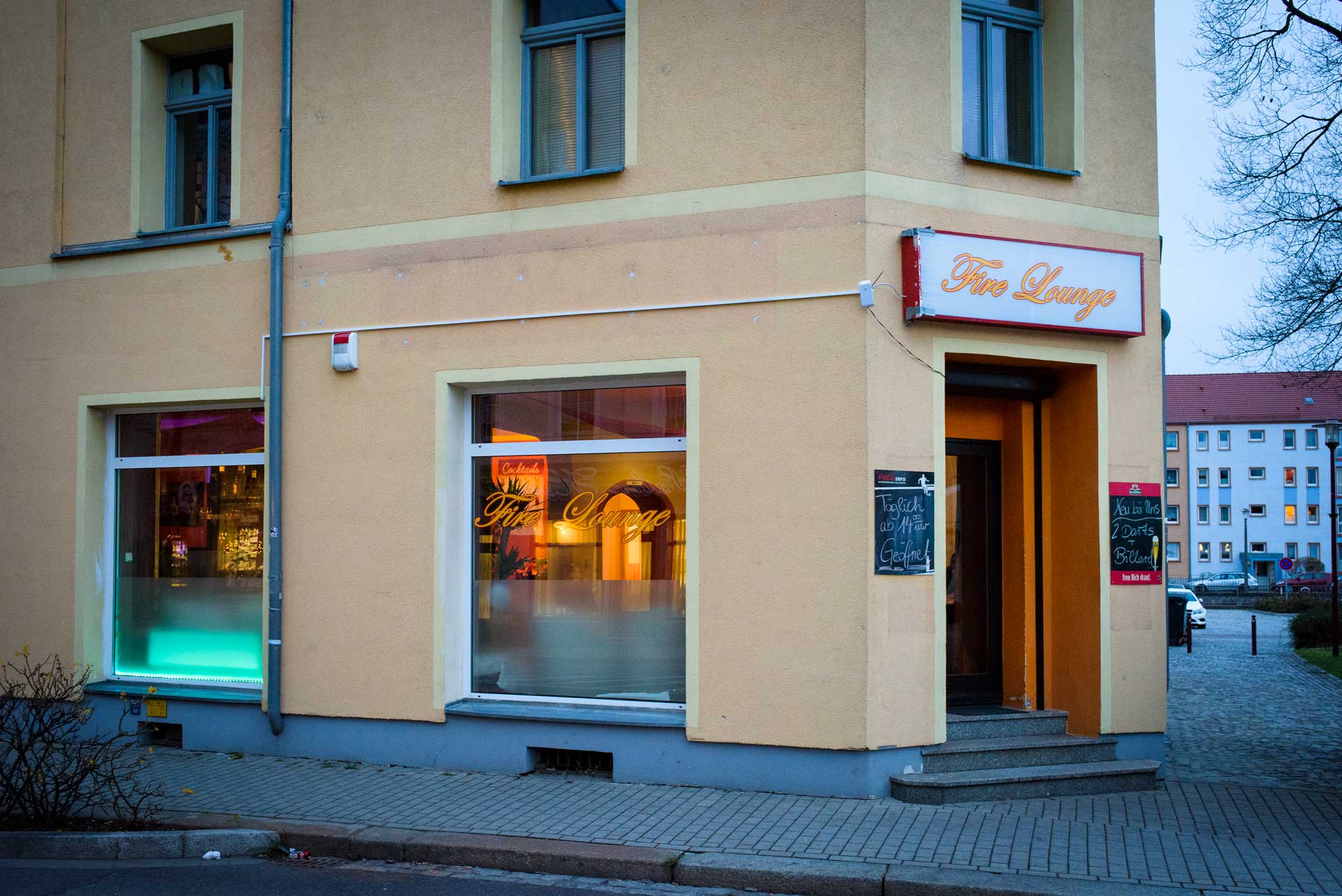
The state government banned a formidable local neo-Nazi group, the Skinheads Sächsische Schweiz, in 2001, but the extremists went on to form new structures, Nattke said. Many of them simply swapped their leathers for suits and joined far-right political parties.
The far and populist right has indeed proven a persistent presence in Saxony’s state legislature, whether in the form of the National Democratic Party, a fringe ultranationalist group typically described as a neo-Nazi organization, or, more recently, the anti-migrant AfD.
AfD stunned the political establishment in September’s federal elections when it won 27 percent of the vote in Saxony, well ahead of Merkel’s Christian Democratic Union. The margins there and in other East German states propelled it to become the country’s third-largest party. Analysts said the result owed much to the AfD’s hard-line positions on the refugee issue and the spread of Islam in Germany.
It’s a dynamic playing out repeatedly across Europe, where anxieties over immigration and Islam have fueled the rise of populists in countries including France, the Netherlands, Italy, and Austria, posing a new challenge to their democracies. The same anxieties are driving a growing wedge in the European Union by strengthening a group of increasingly illiberal, authoritarian Central European governments led by Hungary and Poland, whose leaders rail against EU-mandated migrant quotas. Whether it’s blamed on Brussels or Merkel, the arrival of migrants is seen as an imposition from the political elite.
That view still has a lot of currency in Freital. Jährling, the local AfD chair, said events since the Freital Group’s campaign — the mass sexual assaults in Cologne in 2015, the terrorist truck ramming at a Berlin Christmas market in 2016 — have only reinforced people’s beliefs that the greater threat to Germany’s security comes from asylum-seekers, not homegrown militants. Most locals, like him, remain opposed to large-scale immigration.
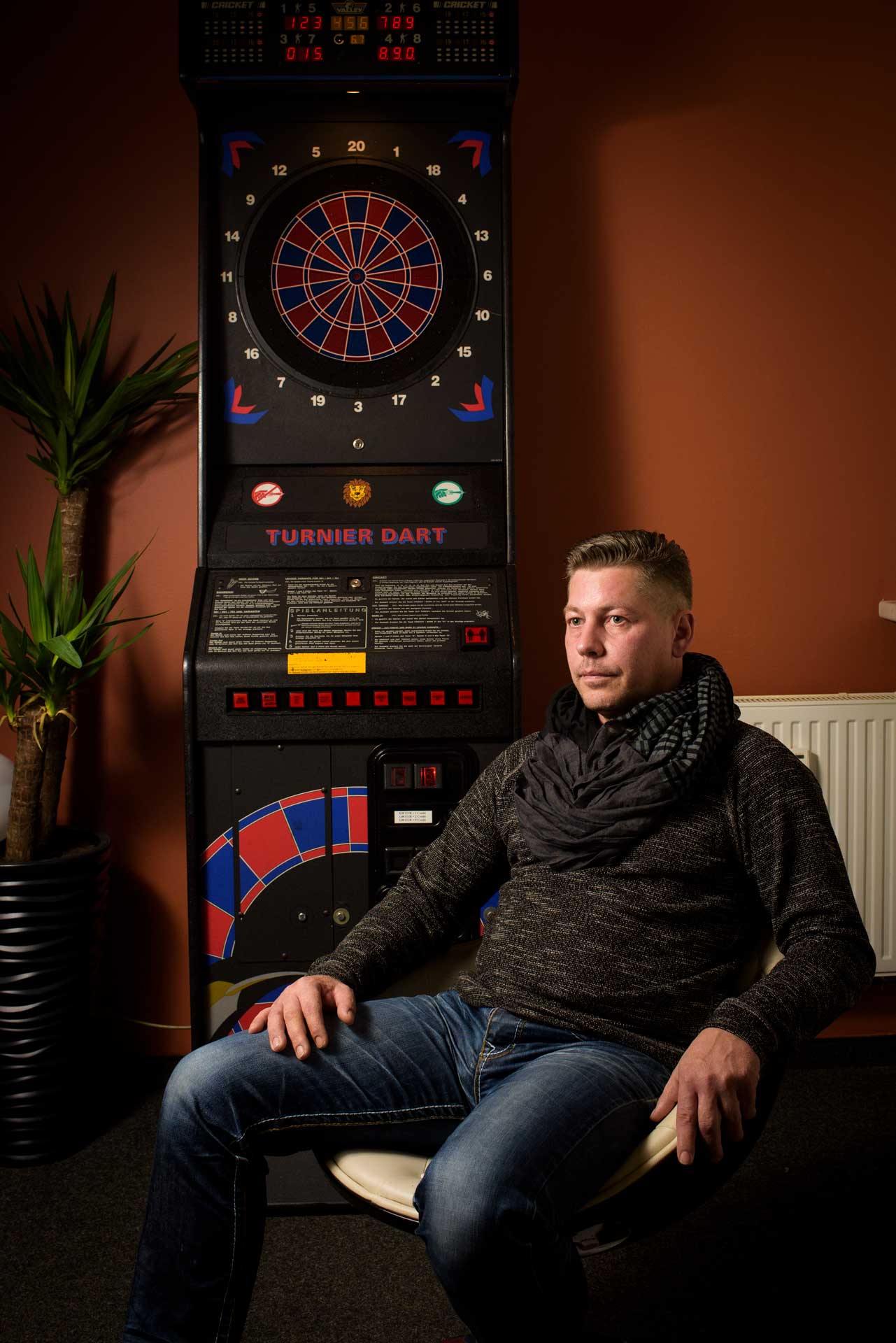
I met Jährling, 42, fresh from his day job as a construction foreman, sitting with a beer and a cigarette in the former Timba Bar, a pub he used to own on Dresdnerstrasse. He played a prominent role in the tumult of 2015, speaking regularly at anti-asylum protests in Freital and across Saxony. His bar was the regular gathering point for the various strands of the anti-asylum movement, including the Freital Group, all of whom Jährling knew personally: an elderly care worker, a railway trainee, a warehouse worker. “They were guys like you or me, normal guys,” he said.
“You can’t put them on the same level as the Red Army Faction and Osama bin Laden,” he said of his former customers, comparing them favorably to the far-left 1970s German terror group and the al-Qaida leader. “There wasn’t that sort of structure. It was all about their 5 minutes of feeling powerful.”
Jährling personally supported the creation of the Bürgerwehr citizens’ patrol to “provide security” for the town. He said he had no idea that members of the group would go on to launch attacks, and he flatly rejected the idea that the anti-asylum movement bears any responsibility for the violence. The majority of people in Freital see the terrorism charges as overblown, he repeated, leading to a degree of sympathy for the attackers.
“If they were charged according to what they really did, they’d get a half year in jail or something,” he said. “But if they’re convicted as terrorists, when they get out of prison they have no future.”

It doesn’t take long for a visitor to Freital to get a sense of the hostility that persists toward the few refugees who remain in the town. On my way to meet Jährling, I ran into a 19-year-old refugee from Afghanistan named Qatradullah Durrani who was waiting in a Dresdnerstrasse restaurant for a friend to finish his shift.
Durrani hails from Kandahar, a volatile province in southern Afghanistan that is the birthplace of the Taliban. He fled his homeland to escape the bloodshed, taking the arduous overland route through western Asia and southeastern Europe before eventually arriving in Dresden in 2015. He knew next to nothing of Germany before his arrival, other than that “Mutti” (“Mommy”) Merkel had promised the refugees a warmer welcome than they would find anywhere else on the continent.
It hasn’t been quite that rosy. While Durrani, like other asylum seekers, receives basic financial support from the German state, he’s gotten plenty of reminders that not everyone wants him around. He said he’s been jumped by neo-Nazis four times; once he had to go to the hospital.
He’s learned it doesn’t pay to go out in public at night unless he’s with a group of friends. “It’s dangerous back in my home country. Just five days ago, there was a very big bombing,” he said. “But it’s dangerous here, too.”
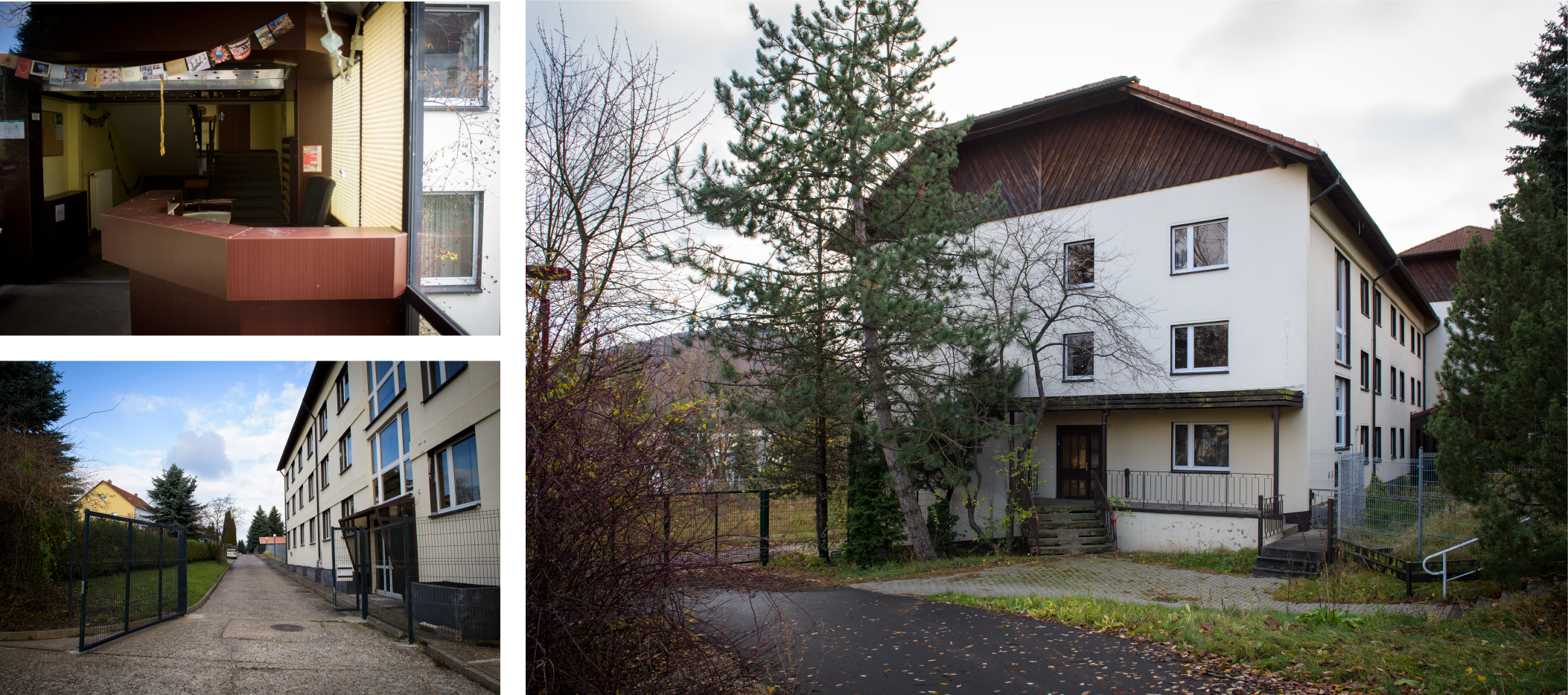
The bombings in Freital have stopped and the perpetrators are likely to receive lengthy sentences after the judge delivers his verdict — something that, in the hubris of their campaign, they may not have anticipated. But they might reflect that they prevailed in their broader mission.
Most of the migrants who arrived in 2015 have now left Freital. Of the roughly 600 refugees who were accommodated there at the height of the migrant influx, 106 remain, according to the local council. Many of them are families, who tend to live in decentralized private housing and present a less conspicuous target than single young men.
“Right-wing ideology doesn’t disappear overnight.”
Thomas Geithner, a spokesman for the local police, said the fact that the number of refugees in the town has decreased significantly meant “everything has returned to normal.” But, he conceded, “right-wing ideology doesn’t disappear overnight.”
To Hübler, the right-wing specialist, it’s clear this entire ugly episode has yet to yield any sort of silver lining. “The xenophobic climate hasn’t changed in Freital,” she said. “Migrants are given a very pointed message: ‘We don’t want you here’ ... All it would take for the violence to return is for the number of refugees to increase again.”
In July 2016, Kummer’s foster son Romeo started over in the west of the country, where he hoped to find a more cosmopolitan, tolerant environment. He relocated to a similarly sized town in North-Rhine Westphalia, settling into a comfortable new life as an apprentice at a logistics company, making friends on a local football team. Kummer fully understands his reasons for leaving Freital, but it upsets her that a capable, ambitious guy looking to make something of his second shot in life wasn’t able to do so in her hometown.
It’s not just the migrants who are leaving. Richter, too, has relocated; even though the people who allegedly blew up his car are in custody, he found himself hounded and harassed by their sympathizers. He was regularly accosted and intimidated on the street — called a “leftist tick,” a “gay leftist pig.” Graffiti saying “Richter out” was spray-painted on a building in town. Fearing that he could be targeted again, he started dramatically changing his daily routine, switching up the time and route he took to work each day, and leaving town on the weekends.
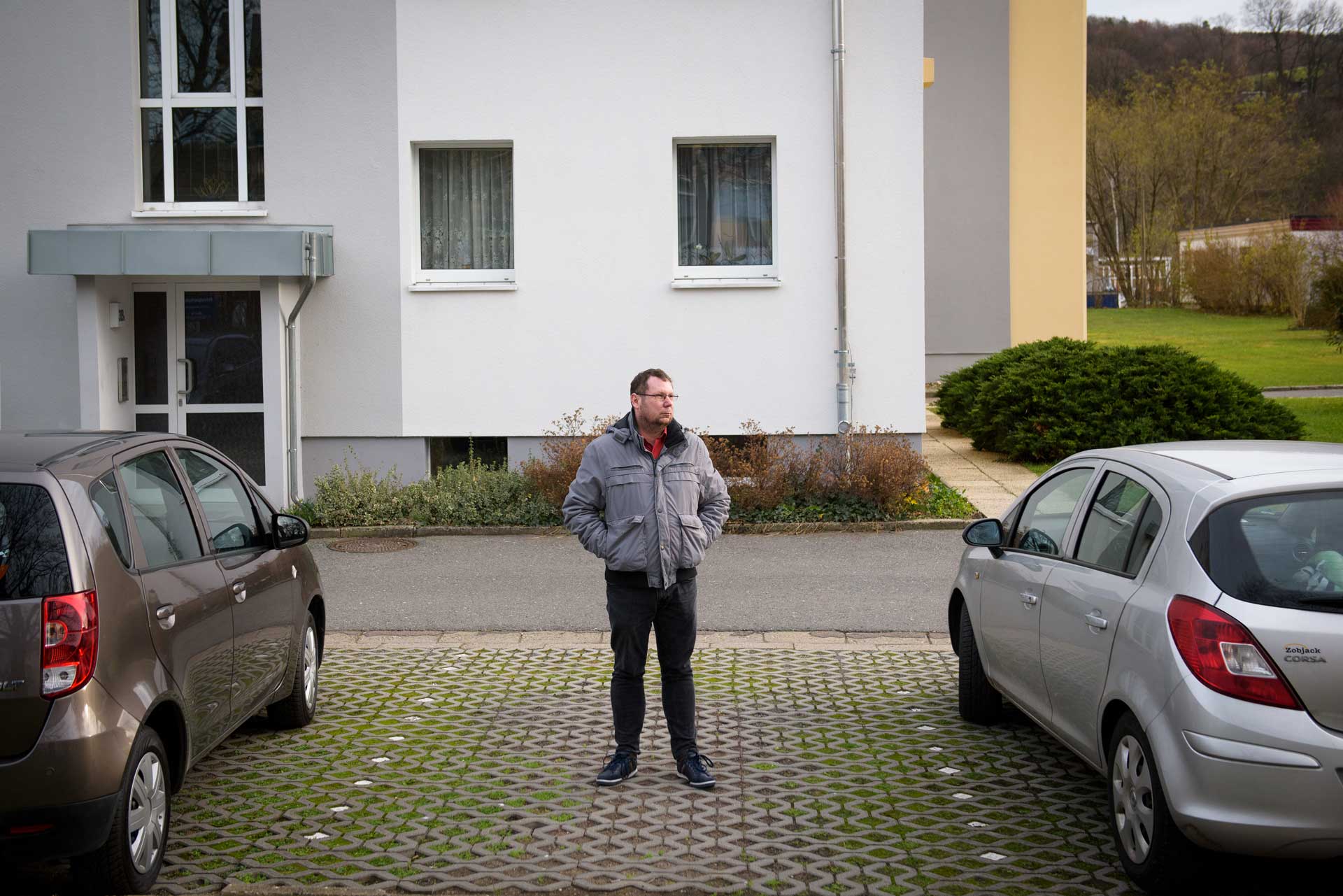
As a victim in the case, Richter had access to the investigators’ files, and what he read there, he said, was awful.
“The defendants wrote in a chat in October 2015, among other things, that they wanted to blow up my car again after their attack on my first car — preferably while I'm sitting in it. When I saw that, I thought, ‘If I want to stay alive, I have to think about leaving Freital.’”
Eventually, he’d had enough. In January, he moved to a new town in the southern state of Bavaria, even though it means he has to commute much further to visit his fiancée, who lives in the neighboring Czech Republic.
When a local newspaper reported last year that Richter was planning to leave, the news was greeted happily by a local anti-asylum Facebook group.
“We come here today to celebrate Richter’s departure,” read the post, asking pointedly when Kummer planned to follow suit. Dozens of people piled on in the comments.
“Get the fuck out of here.”
“Nobody needs the guy in Bavaria. He should just fuck off somewhere else.”
“Finally, Freital is a little cleaner again.”
Tim Hume is a senior reporter for VICE News based in London.


